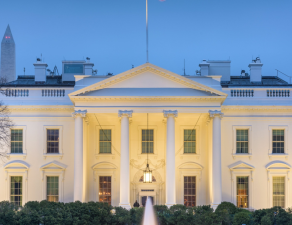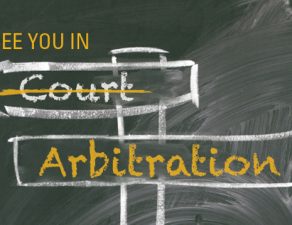
By George H. Friedman*
Chairman of the Board, Arbitration Resolution Services
The other day I was researching the split in the federal Circuits on whether Federal Arbitration Act(“FAA”) section 7 empowers Arbitrators to compel third-parties to produce documents outside the formal evidentiary arbitration hearing.[1]It occurred to me that, based on a strict, literal reading of the statute, arbitrators have no authority to subpoena women under any circumstance. How’s that? FAA section 7 provides that the Arbitrator “may summon in writing any person to attend before them or any of them as a witness and in a proper case to bring with himor them any book, record, document, or paper which may be deemed material as evidence in the case” (emphasis added throughout). Now, I know any Court interpreting this part of the Federal Arbitration Act would hold that women, too, may be the subject of an arbitral subpoena, but as I delved into the Act it became very clear that the venerable Federal Arbitration Act is in need of modernization, for reasons that go beyond linguistic.
A Cold War Relic
The FAA was passed by both houses of Congress, without a dissenting vote(my, how things have changed), signed into law[2]by President Calvin Coolidge on February 12, 1925, and went into effect January 1, 1926. The FAA was codified at 9 U.S.C. §§ 1 et seq. on July 30, 1947.[3]Lots has changed over the ensuing seven decades, but other than a few amendments, 1947[4]saw the last major overhaul of the law.
Archaic Language, Gender Bias, and Technological Obsolescence
The FAA can sure use some updating. I focus only on Chapter 1; Chapters 2 (1970) and 3 (1990) are of more recent vintage. I’ll cover briefly the archaic language used throughout the statute, the gender bias evident on the face of the Act, and then close with a look at some parts that have become obsolete as technology advances.
Linguistic Update
The FAA’s text is a far cry from Plain English, with many long sentences using stilted language. For example, in section 1,the definition of “Maritime transactions” consists of a single, run-on sentence of 131 words.[5]
In addition, as mentioned previously, the FAA is by no measure gender neutral, with several parts referring to men only. For example, Sections 5, 7 and 12 repeatedly use male pronouns.[6]
Technically Obsolete Sections
The potential improvements suggested so far are “nice to haves.” What follows is an analysis of parts of the FAA that have been overtaken by time and technology, and which if not fixed portend problems in the future as more and more of the arbitration process migrates online. Here are some examples:
- Section 4 empowers a court to issue an Order compelling arbitration. But the court can only direct the arbitration to be conducted “within the district in which the petition for an order directing such arbitration is filed.”[7]In what federal district is an online arbitration held? For example, Arbitration Resolution Services, Inc.’s servers are in Coral Springs Florida, and arbitrators and staff are located throughout the United States.
- Section 7 permits arbitrators to subpoena witnesses “to attend before them or any of them as a witness and in a proper case to bring with him or them any book, record, document, or paperwhich may be deemed material as evidence in the case.” Where precisely is an arbitrator serving online located? The computer’s location? The server? The arbitrator’s home? Office? And how does the witness bring items to cyberspace?
- Section 7 also allows a Party to use the court system to compel a recalcitrant entity to obey a subpoena. Which court? “[T]he United States district court for the district in which such arbitrators, or a majority of them, are sitting…” Again, where does a Cloud-based arbitrator “sit?”
- Section 9, governing award enforcement, states that “if no court is specified in the agreement of the parties, then such application may be made to the United States court in and for the district within which such award was made. Again, where is an online arbitration “made”? Section 12 uses the same verbiage for court correction or modification of awards.
- Section 13, which covers the procedure for arbitration-related motions, makes several references to “papers.”
Conclusion
Codified in 1947, the Federal Arbitration Act, like any septuagenarian, is in need of a checkup. For example, the references to district court venue could be changed to “any district in which a party, arbitrator, or arbitration administrator may be found.” While we’re at it, also in order is a general modernization similar to the Revised Uniform Arbitration Act of 2000, which reflected developments over the 45 years following the original Uniform Arbitration Act’s promulgation in 1955. The Federal Arbitration Act turns 100 in 2025. The statute should be modernized well before then.
———————-
*George H. Friedman, Chairman of the Board of Directors of Arbitration Resolution Services, Inc., and an ADR consultant retired in 2013 as FINRA’s Executive Vice President and Director of Arbitration, a position he held from 1998. In his extensive career, he previously held a variety of positions of responsibility at the American Arbitration Association, most recently as Senior Vice President from 1994 to 1998. He is an Adjunct Professor of Law at Fordham Law School. Mr. Friedman serves on the Board of Editors of the Securities Arbitration Commentator. He is also a member of the AAA’s national roster of arbitrators. He holds a B.A. from Queens College, a J.D. from Rutgers Law School, is a Certified Regulatory and Compliance Professional, and is admitted to practice in New Jersey and New York, several U.S. District Courts, and the United States Supreme Court.
[1]The Eighth Circuit says “yes.” The Second, Third, Fourth, and Ninth say “no.”
[2]43 Stat. 883.
[3]61 Stat. 669.
[4]Noteworthy events from 1947 include the Kon-Tiki expedition, the breaking of the sound barrier, the Roswell UFO incident, India and Pakistan gaining independence, creation of the CIA and IMF, the start of the Cold War, and invention of the tubeless tire, transistor radio, mobile phone. Source: http://www.thepeoplehistory.com/1947.html.
[5]“Maritime transactions”, as herein defined, means charter parties, bills of lading of water carriers, agreements relating to wharfage, supplies furnished vessels or repairs to vessels, collisions, or any other matters in foreign commerce which, if the subject of controversy, would be embraced within admiralty jurisdiction; “commerce”, as herein defined, means commerce among the several States or with foreign nations, or in any Territory of the United States or in the District of Columbia, or between any such Territory and another, or between any such Territory and any State or foreign nation, or between the District of Columbia and any State or Territory or foreign nation, but nothing herein contained shall apply to contracts of employment of seamen, railroad employees, or any other class of workers engaged in foreign or interstate commerce.
[6]Section 5(appointment of arbitrators or umpires):“… then upon the application of either party to the controversy the court shall designate and appoint an arbitrator or arbitrators or umpire, as the case may require, who shall act under the said agreement with the same force and effect as if heor they had been specifically named therein…”
Section 7 (witnesses before arbitrators; fees; compelling attendance):already discussed above.
Section 12(notice of motions to vacate or modify; service; stay of proceedings): Notice of a motion to vacate, modify, or correct an award must be served upon the adverse party or his attorneywithin three months after the award is filed or delivered.
[7]This is contrasted with Chapter 2,section 206, governing international arbitrations. In such instances, the court can order “arbitration be held in accordance with the agreement at any place therein provided for, whether that place is within or without the United States.”






